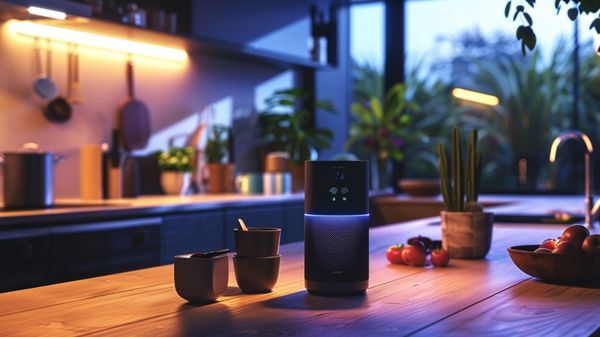Welcome to our guide on creating an energy-efficient home! As we embark on this journey together, let’s explore 10 tips that will transform our homes into havens of efficiency and sustainability.
By incorporating smart design, such as harnessing the sun’s warmth through solar tempering and shading our windows in the summer, we can reduce our energy consumption and lower those pesky utility bills.
Through energy modeling and making intentional design choices, we’ll optimize our home’s efficiency. Super-sealing and super-insulating our building envelope, along with using highly insulated windows and doors, will prevent energy loss.
With efficient ventilation, heating and cooling systems, water heating, lighting, and even renewable energy options like solar panels, we can create a home that not only saves energy but also embraces the future.
Let’s get started on this exciting journey towards an energy-efficient home!
Optimize Energy Modeling
To optimize energy modeling, we begin by using software to estimate energy use during the design phase of our home. This step is crucial in ensuring that our home is energy efficient and cost-effective. By using energy modeling software, we can make informed design choices that will help us achieve our goal of net zero energy while keeping costs down.
We can optimize insulation levels for the ceiling, walls, and floors by using energy modeling to strike a balance between performance and cost. Additionally, we can consider design parameters such as optimizing solar tempering and ventilation based on the results of energy modeling. This allows us to implement cost-effective energy efficiency measures in our home, especially in our heating and cooling systems.
Super-Seal Building Envelope
When it comes to creating an energy efficient home, one of the key areas to focus on is the super-seal building envelope. This means ensuring that the insulation is installed properly to maximize efficiency and minimize energy loss.
In addition, using effective air sealing techniques is crucial in preventing drafts and maintaining a comfortable indoor environment. By prioritizing airtight construction, we can reap the benefits of reduced heating and cooling needs, resulting in significant energy savings.
Insulation for Maximum Efficiency
Our article explores the importance of using proper insulation to achieve maximum efficiency in creating an energy-efficient home.
Insulation plays a crucial role in reducing heat loss and improving energy efficiency. By installing the right insulation levels, you can significantly reduce your home’s energy use and create a more comfortable living environment.
Effective insulation acts as a barrier, preventing heat transfer between the inside and outside of your home. This means that during hot summers, cool air stays inside, and during cold winters, warm air is retained.
Air Sealing Techniques Explained
One effective technique for improving energy efficiency in your home is super-sealing the building envelope. Proper air sealing techniques can significantly enhance your building performance by reducing energy loss and increasing comfort.
By sealing air leaks, you can prevent the escape of conditioned air, leading to a more energy-efficient home. Weather stripping is a common air sealing technique that involves sealing gaps around doors and windows. This method helps to prevent drafts and minimize heat loss.
Another effective technique is caulking, which involves sealing gaps and cracks in walls, ceilings, and floors. Additionally, using spray foam insulation can help seal larger gaps and create an airtight barrier.
Super-sealing the building envelope reduces the need for excessive heating and cooling, saving you money on energy bills while improving your home’s energy efficiency.
Benefits of Airtight Construction
To achieve optimal energy efficiency, it’s imperative to super-seal the building envelope, ensuring that air leaks are minimized and the home remains airtight. By doing so, we can improve the energy efficiency of our homes in several ways.
Firstly, airtight construction prevents air leakage, which means less cool air escaping in summer and less warm air escaping in winter. This, in turn, reduces the need for heating and cooling, saving energy and lowering utility bills.
Additionally, an airtight building envelope promotes passive solar heating, harnessing the sun’s natural energy to warm the home.
Furthermore, an airtight home is better equipped to incorporate renewable energy systems, such as solar panels or geothermal heating, to further reduce energy consumption and reliance on fossil fuels.
Super-Insulate Building Envelope
We frequently prioritize super-insulating the building envelope to optimize energy efficiency in our homes. Proper insulation reduces heat transfer and significantly improves energy efficiency within the building envelope, reducing the need for heating and cooling.
By effectively insulating the ceiling, walls, and floors, we can create a thermal barrier that keeps the hot air out in the summer and the cold air out in the winter. This not only helps to maintain a comfortable indoor temperature but also reduces the strain on our heating and cooling systems, leading to lower energy bills.
Additionally, a well-insulated building envelope can also prevent hot water from cooling down too quickly, further reducing energy usage.
To determine the appropriate insulation levels for our homes, we can consider conducting an energy audit or consult with professionals experienced in energy modeling.
Use Highly Insulated Windows and Doors
To maximize energy efficiency, we recommend utilizing highly insulated windows and doors throughout the home. Energy-efficient windows and doors are essential for maintaining a comfortable temperature inside while reducing energy consumption.
Here are some reasons why you should consider using highly insulated windows and doors in your home:
- Minimize heat loss and gain: Highly insulated windows and doors help prevent heat from escaping during winter and entering during summer, resulting in lower energy bills.
- Improve comfort: Energy-efficient windows and doors help maintain a consistent indoor temperature, ensuring a comfortable living environment throughout the year.
- Reduce the need for heating and cooling: By minimizing heat transfer, energy-efficient windows and doors lessen the load on your heating and cooling systems, resulting in energy savings.
- Meet Energy Star standards: Energy Star-certified windows and doors are tested and proven to meet stringent energy efficiency standards, ensuring optimal performance.
- Enhance environmental sustainability: Using highly insulated windows and doors reduces your carbon footprint, contributing to a greener future.
Create Efficient Fresh Air Supply
How can we ensure a continuous supply of fresh air while maximizing energy efficiency in our homes?
One of the key factors is to create an efficient fresh air supply system. By incorporating a well-designed ventilation system, we can improve indoor air quality and comfort while minimizing energy use.
Highly energy efficient ventilation systems, such as Heat Recovery Ventilation (HRV) or Energy Recovery Ventilation (ERV), are designed to expel stale air while recovering heat. These systems not only provide fresh air but also help to control moisture levels in the home.
By properly ventilating our homes, we can reduce the need for excessive cooling costs, as well as maintain a healthy and comfortable living environment.
Select Energy-Efficient Heating and Cooling System
When it comes to selecting an energy-efficient heating and cooling system for your home, there are a few key points to consider.
First, investing in a smart thermostat can provide numerous benefits, such as optimizing temperature settings and reducing energy waste.
Additionally, proper system maintenance, including regular filter changes and inspections, is crucial to ensure your heating and cooling system operates at peak efficiency.
Smart Thermostat Benefits
Our first step towards creating an energy-efficient home is selecting an energy-efficient heating and cooling system with the benefits of a smart thermostat. A smart thermostat offers several advantages that contribute to energy savings and a comfortable living environment:
- Energy efficiency: Smart thermostats can reduce heating and cooling costs by up to 15%, helping you save money on your energy bills.
- Automated temperature control: These thermostats learn your habits and adjust the temperature automatically, ensuring optimal comfort while minimizing energy waste.
- Remote control: With a smartphone app, you can easily control your thermostat from anywhere, allowing you to adjust the temperature when you’re away from home and avoid unnecessary energy consumption.
- Lighting energy reduction: Dimmer switches and motion sensors can be integrated with smart thermostats to reduce lighting energy consumption, further enhancing the overall energy efficiency of your home.
- Improved convenience: Smart thermostats offer a convenient and user-friendly interface, making it easier for you to manage and monitor your heating and cooling system.
Proper System Maintenance
To ensure optimal energy efficiency, we prioritize regular maintenance of our selected energy-efficient heating and cooling system. This includes scheduling annual check-ups and regularly replacing air filters.
However, it’s not just our heating and cooling system that requires maintenance for energy efficiency. Other appliances in our homes, such as water heaters, dishwashers, and washing machines, also play a role. By regularly checking and maintaining these appliances, we can ensure they’re operating efficiently and using the least amount of energy possible.
Additionally, it’s important to consider the type of light bulbs we use in our existing house. Switching to energy-efficient LED bulbs can significantly reduce energy consumption and save money in the long run.
Heat Water Wisely
Using an on-demand water heater is an effective way to heat water wisely and maximize energy efficiency in our homes.
Here are some practical tips to help us heat water wisely and create an energy-efficient home:
- Insulate hot water pipes: By insulating our hot water pipes, we can minimize heat loss during transportation and ensure that hot water reaches us efficiently.
- Use low-flow fixtures: Installing low-flow faucets and showerheads can reduce water consumption while still providing a satisfying water flow.
- Fix leaks promptly: A dripping faucet or a leaking pipe can waste a significant amount of hot water. Regularly check for leaks and repair them promptly to conserve both water and energy.
- Take shorter showers: Limiting shower time can help us conserve hot water and reduce our overall energy consumption.
- Opt for cold water when possible: For tasks like washing hands or doing laundry, using cold water can save energy by eliminating the need for water heating.
Install Energy-Efficient Lighting
When it comes to energy-efficient lighting, there are two main options to consider: LED bulbs and CFL bulbs.
LED bulbs are more energy efficient and durable than CFL bulbs, making them a smart choice for your home.
Additionally, there are smart lighting options available that allow you to control and automate your lighting to further optimize energy consumption.
LED Vs. CFL Bulbs
We recommend using a combination of LED and CFL bulbs for energy-efficient lighting in your home. LED lights are more energy efficient and durable compared to CFL bulbs. Here are some reasons why using a combination of LED and CFL bulbs can help create an energy-efficient home:
- LED lights consume less energy and have a longer lifespan, saving you money in the long run.
- CFL bulbs are more affordable upfront and still offer energy savings compared to traditional incandescent bulbs.
- LED lights provide instant full brightness, while CFL bulbs may take a moment to reach maximum brightness.
- CFL bulbs are better suited for areas where lights are frequently turned on and off, as they’ve a longer lifespan in such conditions.
- Utilizing a combination of LED and CFL bulbs allows you to optimize light quality while minimizing energy consumption.
Smart Lighting Options
To install energy-efficient lighting in our homes, we can explore smart lighting options.
One option is to install motion sensors that detect movement and automatically turn on the lights. This eliminates the need for manual switching and ensures that lights are only used when necessary, reducing energy waste.
Another option is to invest in smart bulbs that can be controlled remotely through a smartphone or voice commands. These bulbs can be dimmed or turned off when not in use, saving energy and lowering electricity bills.
Additionally, using smart lighting controls can optimize energy usage by programming lights to turn on and off at specific times or adjusting brightness levels based on natural light availability.
Choose Energy-Efficient Appliances and Electronics
By selecting energy-efficient appliances and electronics, we can significantly reduce our overall energy consumption in our homes. Making the right choices when it comes to our appliances and electronics is crucial in creating an energy-efficient home. Here are some tips to help you choose the most energy-efficient options:
- Look for the ENERGY STAR label: Appliances and electronics with this label meet strict energy efficiency guidelines set by the Environmental Protection Agency (EPA).
- Consider the size and capacity: Choose appliances and electronics that are appropriately sized for your needs. Oversized units not only consume more energy but also cost more to operate.
- Check for energy-saving features: Look for features like energy-saving modes, timers, and programmable settings that can help reduce energy usage.
- Compare energy consumption: When shopping for appliances and electronics, compare their energy consumption ratings. Opt for models with lower energy consumption.
- Evaluate standby power usage: Appliances and electronics that continue to consume energy even when not in use can contribute to your overall energy consumption. Look for devices with low standby power usage.
Utilize Renewable Energy Sources
One effective way to achieve an energy efficient home is by incorporating renewable energy sources into our daily lives. By utilizing renewable energy sources, we can cut energy use, improve our homes, and contribute to a more sustainable future.
Consider using grid-tied solar PV panels to harness solar energy and power lighting, heating, cooling, and appliances in your home. These panels not only reduce reliance on fossil fuels but also decrease the carbon footprint of your home.
Additionally, solar generators can be utilized to address the energy needs of zero energy homes. By making use of these renewable energy sources, we can’t only save money on energy bills but also play our part in protecting the environment.
Conclusion
In conclusion, creating an energy-efficient home is a wise investment for both the environment and your wallet.
By implementing smart design choices, such as optimizing energy modeling and super-sealing the building envelope, you can significantly reduce energy consumption.
Choosing highly insulated windows and doors, efficient appliances, and utilizing renewable energy sources like solar panels further enhance your home’s efficiency.
Remember, ‘A stitch in time saves nine,’ so take action now to enjoy long-term energy savings and a more sustainable lifestyle.




